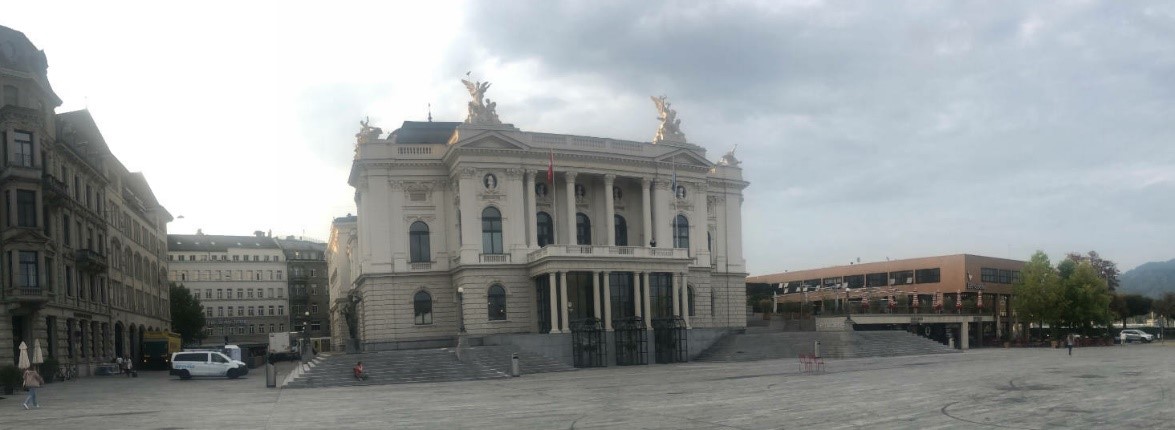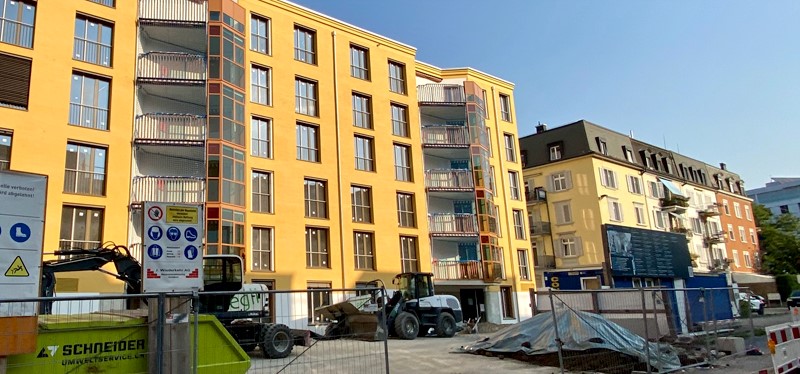According to § 238 PBG (Planning and Building Act of the Canton of Zurich), buildings, facilities and surrounding areas, both as a whole and in their individual parts, are to be designed in such a way that a satisfactory overall effect is achieved; this requirement also applies to materials and colours.
It is undisputed that a building must meet certain requirements. For example, a building must be solidly constructed so that it does not collapse. And it must meet certain requirements in terms of noise or environmental protection. These are hard factors that can be calculated. But what exactly does it mean that a building should integrate into its structural and landscape environment in such a way "that a satisfactory overall effect is achieved"? Who decides whether a project meets this condition?
Satisfactory overall effect is sufficient
First of all, the expression "satisfactory overall effect": in a normal context, a building does not have to integrate "well", "satisfactory" is sufficient. Only in certain particularly sensitive areas (such as core zones or in the immediate vicinity of protected objects) is it permissible to demand a "good" overall effect.

The Bernhard Theatre in Zurich (right, opened in 1984): "Meatloaf" or successful architectural addition next to the opera house?
The Homeowners' Association Zurich writes: "Therefore, the authorities may not refuse a building permit simply because they consider a project to be in need of aesthetic improvement. Only a qualified public interest justifies a restriction of the creative freedom".1
In view of this legal starting point, one would think that there is a great deal of creative freedom in building and that this is accompanied by great architectural diversity. However, if you look at the new buildings in Zurich and the surrounding area, you may be in doubt. Not much is to be seen of creative freedom, not to mention great architectural achievements. Rather, the expression "mishmash" comes to mind. What is the reason for this?
 Nearing completion: new residential development on the Hornbach site. Controversial development in the immediate vicinity of the China Garden on Lake Zurich.
Nearing completion: new residential development on the Hornbach site. Controversial development in the immediate vicinity of the China Garden on Lake Zurich.
In an article published on 5 January 2015, the NZZ2 describes the case of a builder who wanted to convert a house on Weststrasse and build two new attics with three additional flats. The monument preservation authorities waved the preliminary project through, but the desired addition of another storey was refused on the grounds that the "project could not be integrated into the surrounding roof landscape". The authorities did not deny that the owner would have been allowed to build two additional floors of flats on the basis of the occupancy rate.
Appeal yes or no?
Of course you can appeal against such decisions. But if you go through all the instances, it can be quite expensive - and can take rather long. In the canton of Zurich, appeals are handled by the building appeals court. The next instances are the Cantonal Administrative Court and the Federal Supreme Court in Lausanne. It can easily take two to three years before a final decision is reached, and the costs, not including the expenses for a lawyer, can quickly amount to at least 20,000 to 30,000 Swiss francs.
It is understandable that the owner of the building on Weststrasse did not appeal in view of the uncertain prospects. He reluctantly built only 11 flats instead of the 13 originally planned. It should not go unmentioned that the much-invoked densification was also sacrificed in the process.
A case study by Lukas Wolfer3 shows that there is another way. This case concerned a roof terrace for which the building section of the city of Zurich refused a building permit in the first instance. Since there are no special regulations for roof terraces, the construction of a roof terrace can only be refused on the basis of the "integration article" § 238 PBG. The couple concerned appealed against this decision. An on-site inspection by a representative of the Building Appeals Commission then showed that there was no reason for a general refusal to build a roof terrace. Permission was subsequently granted for a slightly redimensioned terrace.
The contemporary and the traditional
A completely different calibre in terms of dimensions and impact on the cityscape is the planned new construction of a five-storey commercial building by star architect Calatrava at Stadelhofen station. For some people it is a "deep-sea ship", others call it a "stranded whale". Here, too, an appeal was lodged, citing the project's inadequate integration. The appeal stated that "the project does not fit into the surroundings and violates the requirements of the preservation of historical monuments".4 The court found that "the preservation of the unique character does not exclude the possibility that buildings with a contemporary, modern design may exist alongside traditional buildings or even be an enrichment". And further: "The planned volume meets the criteria of a particularly good integration into the urban development context in terms of its dimensions"5 The building permit for this project was granted in August 2020, albeit with many conditions attached. Although the project has now even been certified by the court as "particularly well integrated" - there will probably never be agreement as to whether the Calatrava building really does fit "particularly well" or not at all into its surroundings. The project is scheduled for completion in 2023. Soon all interested parties will be able to take a look at it on site. There will be plenty of material for discussion.
 Planned commercial building by Calatrava at Stadelhofen: "deep-sea ship" or "stranded whale"?
Planned commercial building by Calatrava at Stadelhofen: "deep-sea ship" or "stranded whale"?
Visualization: Calatrava Valls SA









